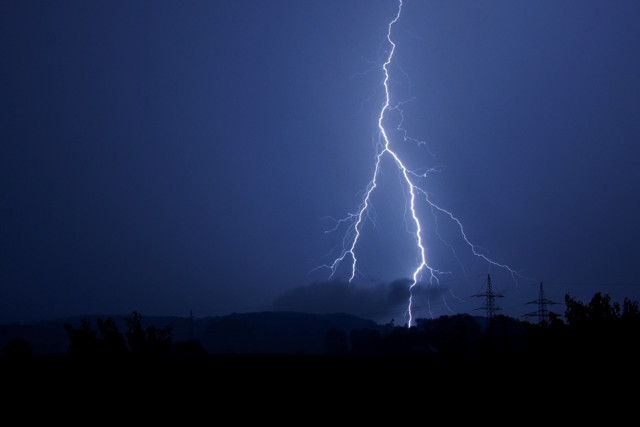
by Sarah Derouin Thursday, December 14, 2017

A new study suggests that lighting strikes can create shock features on rocks that were previously thought to form only as a result of meteorite impacts. Credit: public domain.
When a meteorite smashes into Earth’s rocky surface, the immense temperatures and pressures created can melt rock into glass and leave signatures of the impact behind. Impacts produce tell-tale planar features in quartz grains called shock lamellae — picture a scrambled television signal, with repeating horizontal lines chopping and distorting the image into layers — that scientists have thought were produced only by meteorites.
But in a new study, researchers led by Jiangzhi Chen of the University of Pennsylvania have found another natural phenomenon that can cause shocked quartz to form in rocks: lightning strikes. A lightning bolt can heat a rock to more than 1,700 degrees Celsius within microseconds near the strike, and is capable of producing tube-shaped features called fulgurites in sand or loose sediment. On rock, the same intense pressures and temperatures form what the team calls a rock fulgurite: a distinctive, thin, garbled coating composed of glassy to fine-grained porous material, including shocked quartz.
To better understand how rock fulgurites form, the team used a mathematical model to simulate lightning striking granite to quantify the pressures and temperatures that can be produced during a strike on a rock, and study how the rock might look in the aftermath. They then compared the model results to rock fulgurites found in nature and described in the literature.
The modeled lightning produced pressures greater than 7 gigapascals on the rock surface, enough to form a circular, glassy feature up to 9 centimeters across. The model results were similar to rock fulgurites and shock lamellae found in the field.
The authors suggest that their findings show that shock features might not be definitive evidence of a meteorite impact, but could also be a result of lightning strikes.
© 2008-2021. All rights reserved. Any copying, redistribution or retransmission of any of the contents of this service without the expressed written permission of the American Geosciences Institute is expressly prohibited. Click here for all copyright requests.